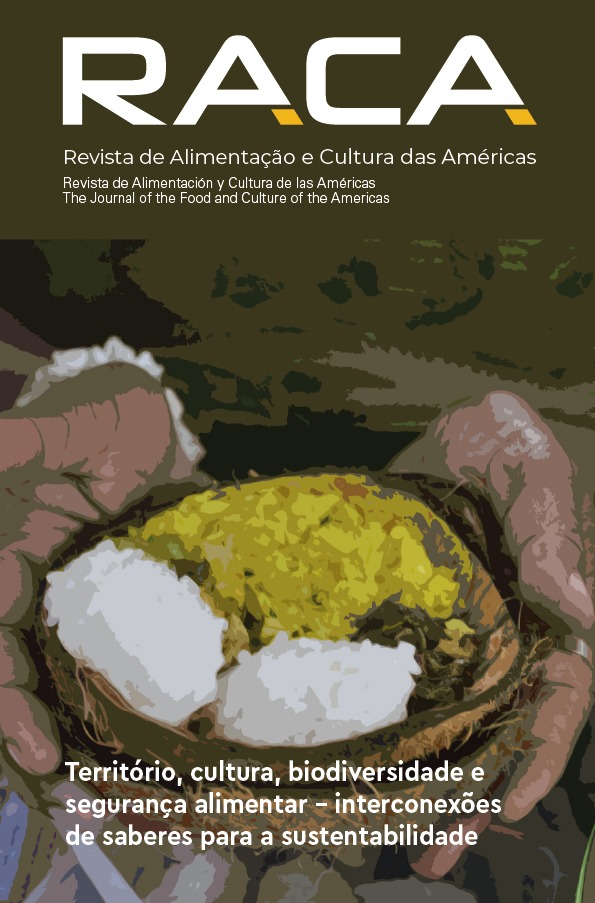The caja tree in candomblé, tambor de mina and umbanda based on the review of some authors
DOI:
https://doi.org/10.35953/raca.v6i1.230Keywords:
Cajá, Sacred, Umbanda, Plantmas, CandombléAbstract
Plants, fruit trees and connecting herbs provide us with a contrast, a sequence of time, a historical consequence and an addition, our medicinal flora coming from the sacred in Candomblé. The studies developed by the Ecoilê Project, from Fiocruz\Brasília, have among their aspects the study of plants - trees, herbs, flowers, roots and barks that our African diaspora made it possible to integrate into the material of traditional medicine and even of Plantmas. Thus, the objective of this article is to address the cajazeira as a liturgical plant in religions of African origin, based on a review of the literature. For this epistemological challenge, we have methodologically used the theory of Pedagogy of Crossroads, aiming to present reflections on this important role that encompasses our plants and foods. Afro-Brazilians separate plants and trees into dioecious, that is, plants with male flowers and plants with female flowers, hot, cold and lukewarm. This multiplies hundreds of times the number of indications for herbal medicine, which is in fact also based on spiritual precepts and with a medicinal development of observation and experience that took millennia to form. One of these sacred foods is the fruit and leaf of the cajá and its two species: cajá-manga (Spondias dulcis Forst anacardiácea) and the common cajá (Spondias lutea L).
References
Santos, M. S. A. (Mãe Stella de Òsósi), & Peixoto, G. D. (2020). O que as folhas cantam (2ª ed.). Autorale.
Kinupp, V. F., & Lorenzi, H. H. (2014). Plantas alimentícias não convencionais (PANC) no Brasil: Guia de identificação, aspectos nutricionais e receitas ilustradas. Instituto Plantarum de Estudos da Flora.
Cacciatore, O. G. (1977). Dicionário de cultos afro-brasileiros. Forense Universitária.
Rufino, L. (2021). Epistemologia na encruzilhada: Política do conhecimento por Exu. Pela porosidade de fronteiras. Revista Abatirá, 2(4), Saberes dos Povos, Desconstrução e Branquitude. Universidade do Estado da Bahia – UNEB – Campus XVIII.
Bascom, W. (1980). Sixteen cowries: Yoruba divination from Africa to the New World. Indiana University Press.
Filho, F. P. (2015). Os Ebós (Ipese) das Ìyámì: As mães feiticeiras (1ª ed.). Isis.
Martins, C. (2006). Euá: A senhora das possibilidades. [Editora não informada].
Nunes, E. S. (2020). Bate folha: Trajetória e memória do Candomblé de Bernardino. Instituto Federal de Educação, Ciência e Tecnologia da Bahia.
Pinto, A. (Org.). (2007). Dicionário da Umbanda (3ª ed.). Eco.
Nunes, E. S. (2017). Contribuição para a história do Candomblé Congo-Angola na Bahia: O terreiro de Bernardino do Bate Folha (1916–1946) [Tese de doutorado, Universidade Federal da Bahia].
Moura, C. E. (Org.). (1994). As senhoras do pássaro da noite. EDUSP.
Dantas, D. R., et al. (2014). Estabilidade da pomada dermatológica contendo extrato glicólico de Spondiasdulcis (cajá-manga). Colloquium Vital. https://doi.org/10.5747/cv2014
Hernandez, A., &Kenneri, C. (2019). Etnobotânica de plantas ritualísticas na prática religiosa de matriz africana no município de Ituiutaba, Minas Gerais, Brasil. Ethnoscientia, 4, 1–10. Universidade Federal de Uberlândia.
Barros, J. F. P. (2024). EwéÒrìsà: Uso litúrgico e terapêutico dos vegetais nas casas de Candomblé Jêje-Nagô. Bertrand Brasil.
Junior, A. R., et al. (2018). O que comem os orixás nos terreiros de Candomblé de nação Ketu de Salvador, Bahia: Uma perspectiva etnoarqueológica. Instituto do Patrimônio Histórico e Artístico Nacional; Universidade Federal do Rio de Janeiro, Museu Nacional, Programa de Pós-Graduação em Arqueologia.
Verger, P. F. (1995). Ewé: O uso das plantas na sociedade Ioruba. Companhia das Letras.
Downloads
Published
How to Cite
Issue
Section
License
Copyright (c) 2025 CC Attribution 4.0

This work is licensed under a Creative Commons Attribution 4.0 International License.






